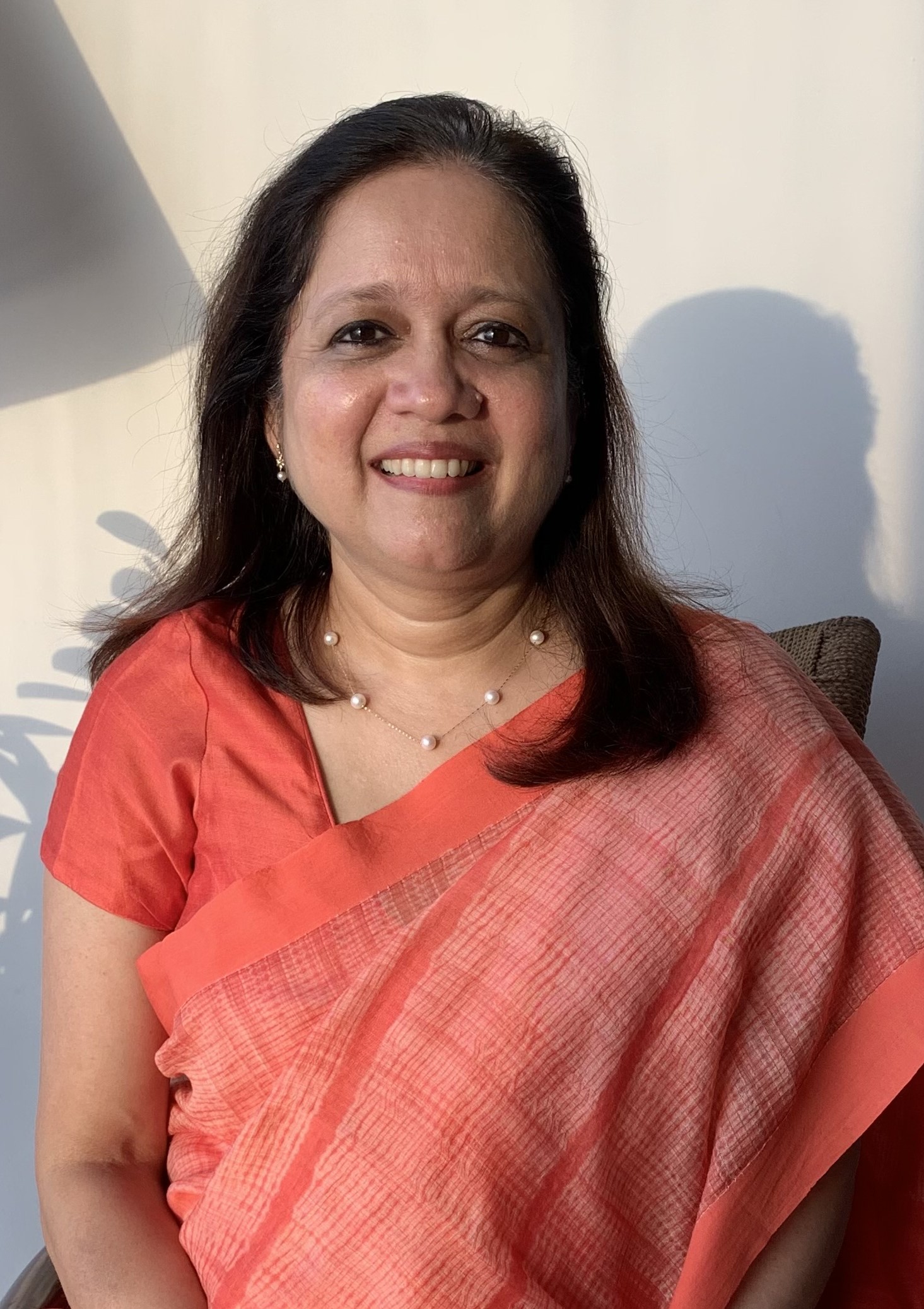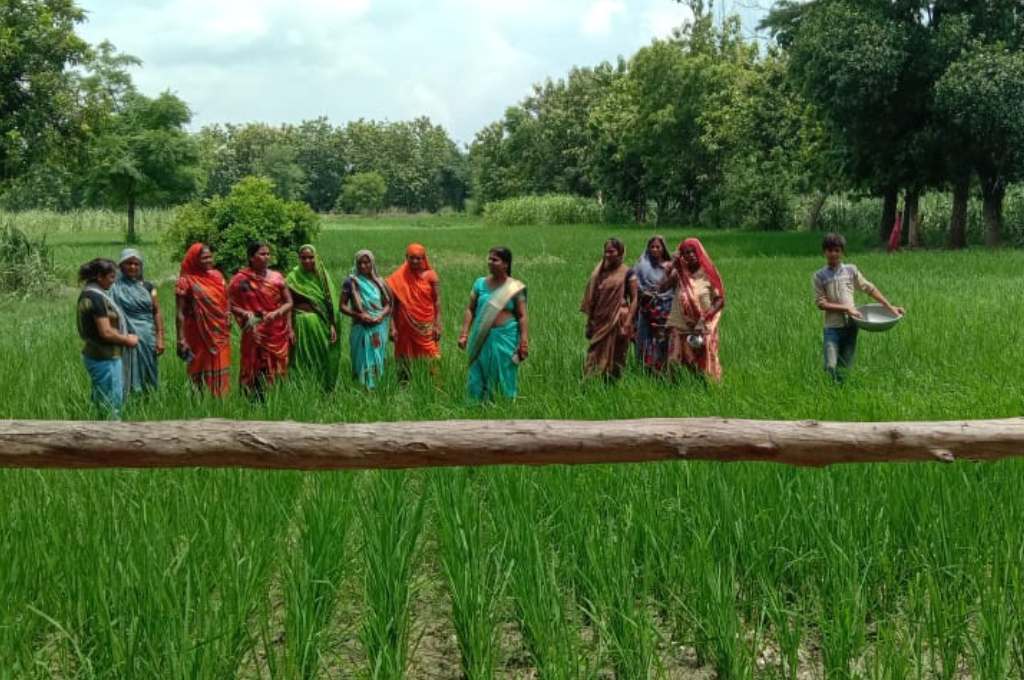Phoolbano, a zari worker, lives with her three children in Nayagaon Mohammadpur village, in Uttar Pradesh. She has been in charge of the household ever since her husband migrated to New Delhi to earn a living. “A business correspondent, Rajesh, brought to my attention that my clothes or the money I was hiding in grocery boxes could be stolen or spent irrationally. He told me that my small amounts of cash can be saved in banks. It is safer, and over time regular savings could make me eligible for a loan.” Phoolbano’s neighbour Shareena Bi, a student and home manager, also sees value in formal savings. “Only when one has savings can one move forward. If I save money, I can study further.”
Savings can provide a critical safety net to women, offering them independence and help in emergencies. However, stories such as those of Phoolbano and Shareena are not commonplace in India. With the country aiming to become a USD 5 trillion economy by 2024–25, it is imperative that it invests in women’s economic empowerment through financial inclusion. When women are able to access useful and affordable financial products and services, they have more opportunities to generate income, accumulate assets, and make decisions that affect their lives. This in turn positively impacts not only the women themselves, but also their communities and the economy. Further, regular formal savings can also unlock access to other financial services such as insurance, pension, and credit that build the women’s resilience against external shocks.
Initiatives such as the Pradhan Mantri Jan Dhan Yojana (PMJDY), which aims to provide banking services to underserved communities at the last mile, are critical to India’s journey in this regard. In particular, PMJDY accounts have provided millions of Indians with the opportunity to save in banks. Since its launch in 2014, the number of accounts opened has tripled from 14.72 crore in March 2015 to 46.25 crore in August 2022. Fifty-six percent of these accounts are owned by women.
However, rather than saving, women are actively using their PMJDY accounts to access the benefit transfers they receive from government initiatives. Our research at Women’s World Banking has confirmed that women from rural areas and low-income groups perceive banks as spaces not meant for them or their small sums of money. Additionally, the Inclusive Finance India Report 2022 found that more than 127 million adults made their first digital payments directly from their accounts during the COVID-19 period; however, women were found to be less savvy in undertaking digital transactions than men.
What keeps women away from formal banking?
Undoubtedly, women are intuitive savers, but not all save formally with banks. They continue to rely on traditional saving methods, such as keeping the money in their homes. Deepening financial engagement through saving, building accounts, and credit histories or accessing other financial products such as microinsurance, pensions, or microloans are not women customers’ priorities. There are many reasons for this, the main one being that women perceive their incomes as negligible, and therefore not suitable for saving in banks. Culturally, women are also not enabled or taught to make financial decisions, and thus they struggle for autonomy. This often forces them to create their own saving mechanisms that give them a sense of control. As a result, women do not perceive the bank as a place to save—especially ‘small’ amounts—as it feels unfamiliar and more daunting.

For instance, our research found that though rural women own bank accounts, they do not engage with them. Rural women have few sources of income that they can call their own. Even when they participate in their family’s agricultural activities, they do not identify it as contributing to family income. They also typically do not participate in household financial decision-making, or in the utilisation of direct benefit transfers (DBTs) in their PMJDY accounts. Simply put, they do not see the value in banking services.
Things are slightly different in urban India, where many low-income women work to earn a living and use their PMJDY accounts to access government benefits, but not necessarily save. We found that low-income women in urban areas don’t consider saving with the bank convenient and are unaware of their local business correspondents. This furthers their inertia to change behaviour.
Why should banks invest in women?
Beyond financial inclusion, there is also a business case for banks to invest in women customers. As per our estimates, banks can potentially unlock an estimated inflow of INR 20,000 crore in deposits, while disbursing INR 10,000 crore in overdrafts to 20 million beneficiaries, if 100 million low-income women initiate a habit of small-scale savings.
We implemented a Jan Dhan Plus programme across Mumbai, Delhi, and Chennai to encourage women to engage with their PMJDY accounts. We found that when both women and men are active PMJDY savers (making at least four deposits of approximately INR 500 a year), the average bank balance of women is 30 percent higher than that of men and a woman customer’s lifetime revenue is at least 12 percent higher than that of a male customer. This is because women hold higher balances in their accounts. This makes it even more imperative that banks begin to take women customers seriously.
Building trusting banking relations with women
Through our work with India’s public sector banks across urban, rural, and peri-urban areas, we found that the first step was to reach women at their homes and community spaces and to create awareness through relevant and culturally appropriate marketing campaigns. This is key since many low-income women face mobility restrictions in leaving their homes, but are allowed to venture out in groups or gatherings with other women.
Banking correspondents (BCs) and BC sakhis (appointed by the National Rural Livelihood Mission to work as women banking agents at the community level) are highly effective networks in reaching women PMJDY customers. In urban areas, 32 percent of women who engaged with BCs considered saving with the bank and 18 percent maintained the savings behaviour.
However, despite banks’ investment in developing a network of BCs to offer last-mile banking services, not all BCs have the skills—beyond providing access to government benefit transfers—to engage with women PMJDY account holders in rural areas. Most BCs were focused on providing only cash-in and cash-out services, and very few actively encouraged women to invest in other products such as the Jan Suraksha insurance and pension plans.
BCs who were good communicators and relationship-oriented were able to connect with women customers better, encourage them to maintain savings in their accounts, and cross-sell insurance and pension. Whether it is a BC in a rural area, operating from their BC point, or in an urban area where the kirana stores double up as BC points, women customers need to develop a trusting relationship with this key network of last-mile functionaries.
In urban areas, women BCs were three times more successful in engaging and cross-selling financial services to low-income women customers. BCs can also realise better revenues and commissions by actively engaging women customers and cross-selling insurance and pension. This helps in building credit history, availing loans and credit, and promoting savings.
Banks thus need to invest in strengthening the capacities of the BCs and the BC sakhis. It is critical that these agents, especially women agents, are trained in business management and gender sensitivity to service low-income or rural women customers better and in a manner that feels welcoming. Banks and livelihood missions must further invest in supporting the supervision of BCs and BC sakhis, giving them on-the-job feedback, along with timely recognition of their services to cement the network and encourage more people to become banking agents.
The merit of women-centred designs
A women-centred design approach focuses on addressing the needs of women and overcoming the barriers they face in saving at a formal bank. Creating a mental model of the bank as a welcoming place for them to save, making it easy for women to save at banks using accessible and trusted channels, making savings relatable and rewarding, motivating and nudging them to build a habit of saving formally, having a stronger women-to-women banking network, and creating relevant and simplified banking products for women are definitely steps in the right direction. Leveraging digital technologies can unleash the potential for India’s economy and gender-inclusive finance. Finally, tracking sex-disaggregated data is key to understanding the differences in women’s customer behaviour, which will further help financial institutions and policymakers to advance financial inclusion.
—





